
The Second Opium War, also known as the Second Anglo-Chinese War, the Second China War, the Arrow War, or the Anglo-French expedition to China, was a colonial war lasting from 1856 to 1860, which pitted the United Kingdom, France, and the United States against the Qing dynasty of China.
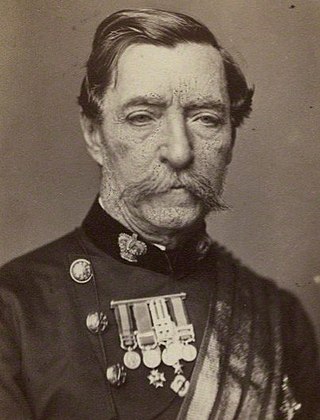
Field Marshal Robert Cornelis Napier, 1st Baron Napier of Magdala was a British Indian Army officer. He fought in the First Anglo-Sikh War and the Second Anglo-Sikh War before seeing action as chief engineer during the second relief of Lucknow in March 1858 during the Indian Rebellion of 1857. He also served in the Second Opium War as commander of the 2nd division of the expeditionary force which took part in the Battle of Taku Forts, the surrender of Peking's Anting Gate and the entry to Peking in 1860. He subsequently led the punitive expedition to Abyssinia in July 1867, defeating the Emperor Tewodros II of Ethiopia with minimal loss of life among his own forces and rescuing the hostages of Tewodros.

Field Marshal Garnet Joseph Wolseley, 1st Viscount Wolseley,, was an Anglo-Irish officer in the British Army. He became one of the most influential and admired British generals after a series of successes in Canada, West Africa and Egypt, followed by a central role in modernizing the British Army in promoting efficiency.

Lieutenant Colonel Edmund Henry Lenon VC was an English recipient of the Victoria Cross, the highest and most prestigious award for gallantry in the face of the enemy that can be awarded to British and Commonwealth forces.
Major General Robert Montresor Rogers, was a British Army officer and an Irish recipient of the Victoria Cross, the highest award for gallantry in the face of the enemy that can be awarded to British and Commonwealth forces.
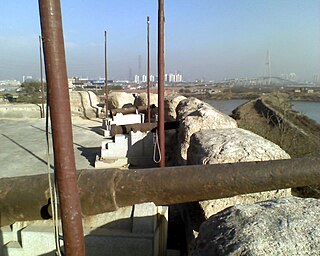
The Taku Forts or Dagu Forts, also called the Peiho Forts are forts located by the Hai River estuary in the Binhai New Area, Tianjin, in northeastern China. They are located 60 km (37 mi) southeast of the Tianjin urban center.

The Buffs (Royal East Kent Regiment), formerly the 3rd Regiment of Foot, was a line infantry regiment of the British Army traditionally raised in the English county of Kent and garrisoned at Canterbury. It had a history dating back to 1572 and was one of the oldest regiments in the British Army, being third in order of precedence (ranked as the 3rd Regiment of the line). The regiment provided distinguished service over a period of almost four hundred years accumulating one hundred and sixteen battle honours. In 1881, under the Childers Reforms, it was known as the Buffs (East Kent Regiment) and later, on 3 June 1935, was renamed the Buffs (Royal East Kent Regiment).
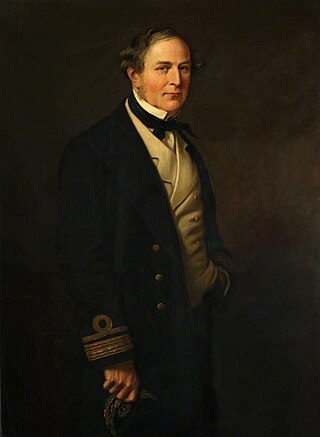
Admiral of the Fleet Sir James Hope, GCB was a Royal Navy officer. As a captain he was present at the Battle of Vuelta de Obligado during the Uruguayan Civil War and then in the Baltic Sea during the Crimean War.
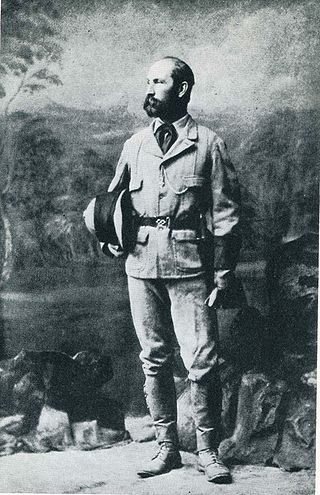
Major General Sir George Pomeroy Colley, was a British Army officer who became Governor and Commander-in-Chief of Natal and High Commissioner for South Eastern Africa. Colley was killed in action, at the Battle of Majuba Hill.
The Private of the Buffs is a ballad by Sir Francis Hastings Doyle describing the execution of a British infantryman by Chinese soldiers in 1860.

The 44th Regiment of Foot was an infantry regiment in the British Army, raised in 1741. Under the Childers Reforms it amalgamated with the 56th Regiment of Foot to form the Essex Regiment in 1881.

Flashman and the Dragon is a 1985 novel by George MacDonald Fraser. It is the eighth of the Flashman novels.

Field Marshal Sir John Michel, was a British Army officer. He commanded the 6th Regiment of Foot during the Eighth Xhosa War in 1851 and served as Chief of Staff of the British Army's Turkish contingent during the Crimean War in 1854 before transferring to India where he commanded the Malwa Field Force which pursued Tatya Tope in the aftermath of the Indian Mutiny. He then commanded the 1st Division at the Battle of Taku Forts in August 1860 during the Second Opium War and took part in the burning of the Old Summer Palace at Peking in October 1860 as a reprisal for the torture and murder of British prisoners before being appointed Commander of British Troops in China and Hong Kong in 1861. He later commanded the forces in British North America playing a key role in the organization of the militia volunteers in resistance to the Fenian raids invasions in 1866. His last appointment was as Commander-in-Chief of Ireland in 1875.

The 67th Regiment of Foot was a line infantry regiment of the British Army, raised in 1756. Under the Childers Reforms it amalgamated with the 37th Regiment of Foot to form the Hampshire Regiment in 1881.

The Battle of Palikao was fought at the bridge of Baliqiao by Anglo-French forces against the Qing Empire during the Second Opium War on the morning of 21 September 1860. It allowed Western forces to take the capital Beijing and eventually defeat the Qing Empire.

The First Battle of Taku Forts was the first attack of the Anglo-French alliance against the Taku Forts along the Hai River in Tianjin, China, on 20 May 1858, during the Second Opium War.

The Third Battle of Taku Forts was an engagement of the Second Opium War, part of the British and French 1860 expedition to China. It took place at the Taku Forts near Tanggu District, approximately 60 kilometers (36 mi.) southeast of the city of Tianjin (Tientsin).

Between 1858 and 1860, the Russian Empire annexed territories adjoining the Amur River belonging to the Chinese Qing dynasty through the imposition of unequal treaties. The 1858 Treaty of Aigun, signed by the general Nikolay Muravyov representing the Russian Empire and the official Yishan representing Qing China, ceded Priamurye—a territory stretching from the Amur River north to the Stanovoy Mountains, but the Qing government initially refused to recognize the treaty's validity. Two years later, the Second Opium War concluded with the Convention of Peking, which affirmed the previous treaty as well as an additional cession including the entire Pacific coast to the Korean border, as well as the island of Sakhalin to Russia. These two territories roughly correspond to modern-day Amur Oblast and Primorsky Krai, respectively. Collectively, they are often referred to as Outer Manchuria, part of the greater region of Manchuria.
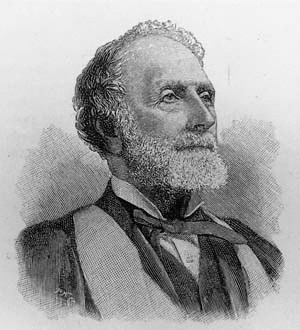
Sir Thomas Francis Wade, was a British diplomat and sinologist who produced an early Chinese textbook in English, in 1867, that was later amended, extended and converted into the Wade-Giles romanization system for Mandarin Chinese by Herbert Giles in 1892. He was the first professor of Chinese at Cambridge University.
The Canton Coolie Corps was a British Army logistics unit raised in 1860 for service in the latter part of the Second Opium War. The unit was recruited from Chinese men, typically from members of the Hakka people, who would serve as coolies, manual labourers who carry goods. Recruitment was slowed due to false rumours that the British intended to use the coolies as human shields in battle but around 3,000 out of a targeted 4,000 were mustered. The unit served in the march on Beijing and were well regarded. It was disbanded at the end of the war.
















